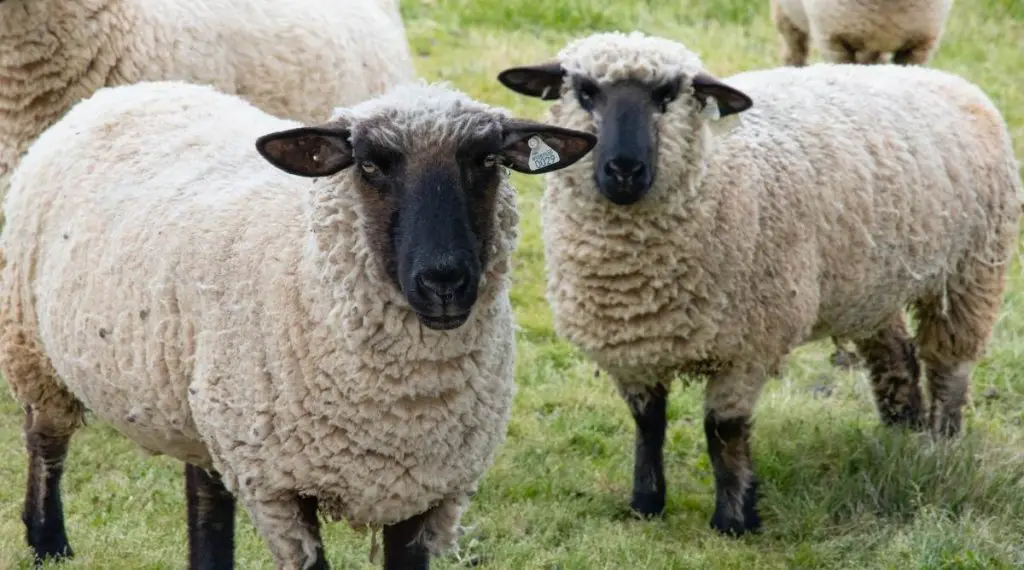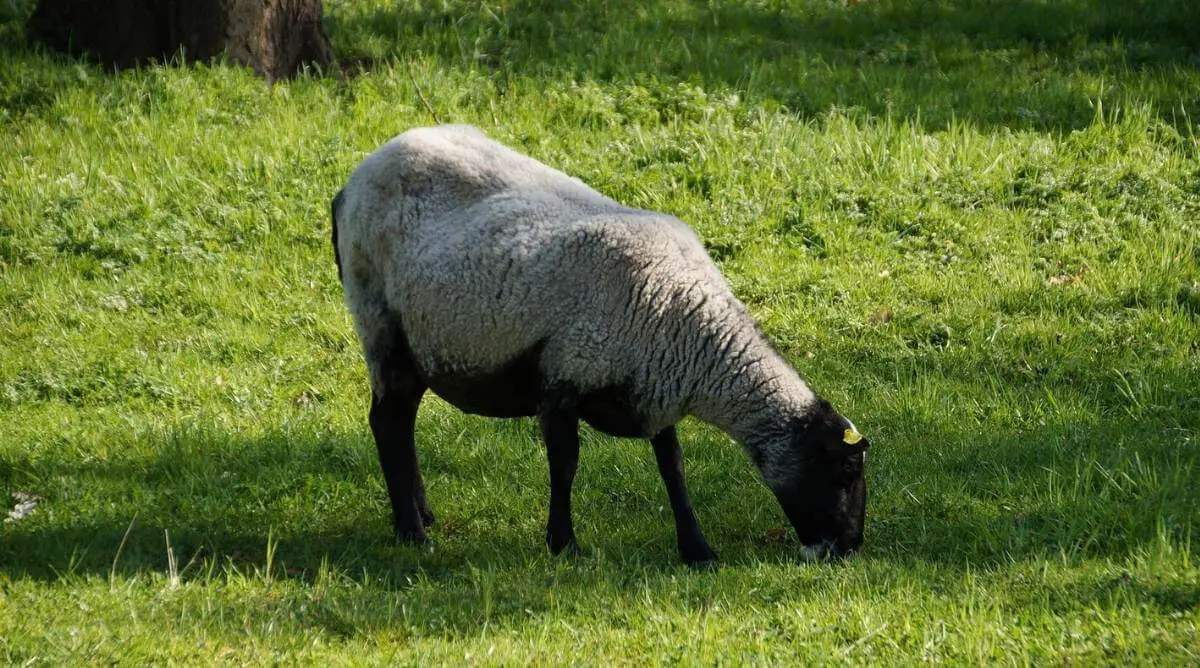Suffolk sheep are a large, hardy breed originating in Britain. Farmers and breeders use them for meat production and crossbreeding due to the fast growth rate of Suffolk lambs. Suffolk sheep produce high-quality, tasty meat, milk, and medium-grade wool.
Table of Contents
Suffolk Sheep Origin
Suffolk sheep originated in Britain. The breed is the outcome of crossbreeding between Norfolk Horn ewes and Southdown rams.
Suffolk sheep were introduced to the United States in 1888.
Characteristics of Suffolk Sheep
| Characteristics | Description |
| Origin | Britain |
| Appearance | Hornless, with black faces, black limbs, and white torsos. |
| Wool | Medium-grade wool. Fineness from 25.5 to 33 microns. Spinning count 48-58. Staple 2-3.5 inches. Yield 50-62%. |
| Weight | 240 lbs-350 lbs (Rams), 180 lbs-350 lbs (Ewes) |
| Fertility | Suffolk rams are often used for crossbreeding. Suffolk lambs have excellent growth rates. |
| Meat | High proportion of lean meat to fat. Suffolk cross lambs can weigh 40kg, with 3mm back fat, at 15-16 weeks. |
| Environment | Adaptable to any climate. Their hard black feet give them a natural protection against diseases and climate. |
| Common uses | Meat production, milk production, and medium-grade wool. |
Suffolk sheep are a large, hardy breed. They are hornless and farmed for both meat and wool production. Suffolk rams weigh between 240lbs-350 lbs. Ewes weigh between 180 lbs-350 lbs
They have open, black faces, black limbs, and white torsos. Their proportions and coloring are inherited through their Southdown roots, and their hardiness is traced to their Norfolk Horn roots.
Suffolk sheep are bred primarily for their meat. They also produce large amounts of milk. The lambs are known for their rapid growth rate and reach maturity at a young age. The ewes are known to have excellent mothering traits.
Suffolk rams are often used as a terminal sire on ewes that are crossbred because they produce offspring with excellent growth rates.
Which Environments Are Best for Suffolk Sheep?

Suffolk sheep can thrive in any climate. Their hard black feet give them a natural resistance to foot diseases and enable them to thrive in wet conditions.
The breed also does well in dry areas. In fact, high fertility Suffolk rams work best in hot summer conditions.
Spider Syndrome in Suffolk Sheep
A downfall of this breed is Spider Syndrome, a genetic problem causing deformities that can lead to death. Spider lambs have abnormal growth of the cartilage and bones.
Spider Syndrome is common in Suffolk sheep and is also present in other breeds like Hampshire sheep.
Facts about Suffolk Sheep Wool
Suffolk wool is a medium wool breed. The wool is well-defined and short. The fiber is fine and does not tend to matt or felt together.
Fiber fineness ranges from 25.5 to 33 microns. The spinning count is between 48 to 58. The staple length ranges from 2.0 to 3.5 inches. Mature Suffolk ewes produce fleece weights of around 3.6 kg, with a yield percentage of 50-62%.
As the sheep ages, the wool becomes coarser and the applications for the fiber may change accordingly.
Suffolk Sheep Meat Production
Meat production is the primary reason to farm Suffolk sheep. Early maturity in the Suffolk breed ensures a lamb is ready for slaughter and the market at an early age. There is a high proportion of lean meat to fat in the meat produced by this breed.
Suffolk lambs reach maturity at a rapid rate. For this reason, they are often used as a sire line for crossbreeding. Suffolk cross lambs can achieve a weight of 40kg, with 3mm back fat, at 15 to 16 weeks.
Carcasses of the Suffolk sheep carcasses are cut into pieces with ease.
Association
From 1900 until 1959, the SA Stud Book Association recorded all Suffolk breed registrations. The introductory meeting of the current society, the United Suffolk Sheep Association, took place on 5 September 1959 in Bloemfontein.

